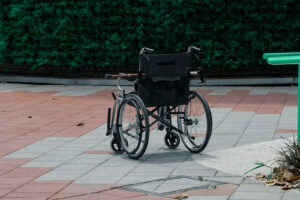Cancer treatments are often invasive and painful. They may involve physical changes or discomfort in the bones, muscles, abdomen, hands or feet. Some patients may also experience mental and physical fatigue, stress, anxiety or sleep disturbances. To counteract these symptoms, some patients set physical activity goals to help improve their progression through the aches and pains of treatment. They accomplish this by gaining strength, building endurance and taking a more active role in physical fitness.
This is one way a cancer warrior can be “physically empowered.” A familiar emotion among cancer patients is the feeling they have lost control while knowing they could face a tough physical fight ahead. However, in the battle against cancer, it means so much more if you can feel empowered at the start of your journey, especially if it involves your physical health.
Exercise can provide many health benefits, including increasing the oxygen and blood flow to the muscles, nourishing the bones and improving mood. Raquel Quijano, a breast cancer warrior from Texas, agrees. She knew exercise would be essential to her wellness through her cancer treatments, which left her feeling nauseous and physically exhausted.
Quijano began exercising weekly, and continues to maintain a regular schedule of walking and light weightlifting. She believes this helped reduce pain and inflammation while improving her flexibility, sleep and energy levels. “I knew it would be worth the extra work,” she says.
Healthcare professionals are lending their support by encouraging patients to stay physically active on a routine basis and invest in their general health. Dr. Jamie Tridico, PT, DPT, a West Virginia-based physical therapist specializing in cancer rehabilitation, believes in fostering an empowered mindset. “[It] is essential to participate in some type of physical activity on a daily basis,” she says. “Even a 10-minute walk outside is beneficial.” Even a short walk allows you to get some fresh air and enjoy the sunshine, which can help the mind relax.
Tridico has witnessed firsthand the physical challenges and limitations cancer patients face in their journey to recovery, which can include difficulty in reaching overhead, lifting everyday items or even getting dressed in the morning. As a result, Tridico has made it her mission to educate and provide the best physical therapy to her patients — including passive and active range of motion with strengthening and resistance exercises — to help produce what she says is a “better quality of life after going through treatment.”
Tridico notes that physical limitations may discourage patients and slow their healing process. She educates them on taking precautions that will help to enhance their recovery, such as practicing healthier eating, reducing sugar and salt intake, stretching, deep breathing exercises, monitoring blood pressure and exercising under the supervision of their medical team.
Tridico also recommends enlisting an exercise buddy, as it promotes accountability. The opportunity to talk with friends may also help reduce the emotional toll of cancer treatments. Tridico says being well-informed of potential physical limitations after treatments is essential, as providers can adjust or modify specific routines for personalized treatment.
This mindset is in conjunction with Dr. Fadi Abu-Shahin, MD, a medical oncologist and hematologist based in Texas who is dedicated to treating patients with a holistic, whole-body view. Abu-Shahin believes communication is essential during all treatment stages, from diagnosis to survivorship, to help reduce stress and minimize anxiety.
Good communication between patient and provider allows for a better understanding of treatment plans and how best to incorporate specific physical fitness goals. Abu-Shahin says patients may face challenges related to diet, weight and physical activity levels, and that maintaining a healthy weight by eating nutritious foods can help. “Patients who were previously healthy before their diagnosis would do better during their treatment,” he says.
Abu-Shahin recognizes that patients may have concerns about their treatment side effects and physical changes. He recommends keeping the lines of communication open between the patient and physician. “Once we know how the patient feels, we can make adjustments to aid in their treatment process and promote ideal health results,” he says.
Each patient should be encouraged to experience healthy success in their cancer journey. From the guidance of their physicians and medical group, taking ownership of their physical health is essential. With trust in their team, support and perseverance, patients can gain knowledge and prepare to be their physical best — optimistic, focused and physically empowered for treatment.







